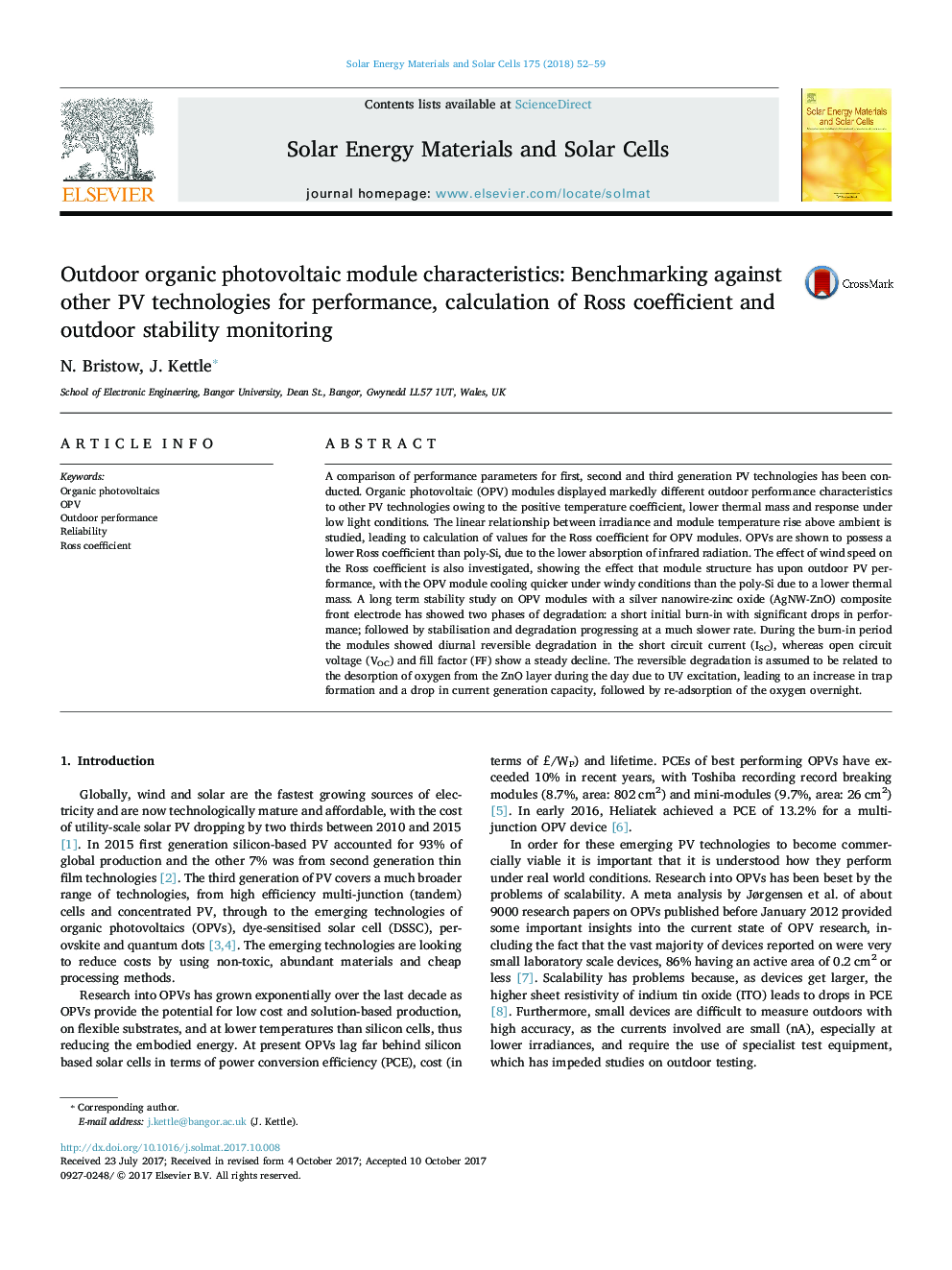| کد مقاله | کد نشریه | سال انتشار | مقاله انگلیسی | نسخه تمام متن |
|---|---|---|---|---|
| 6534499 | 1420648 | 2018 | 8 صفحه PDF | دانلود رایگان |
عنوان انگلیسی مقاله ISI
Outdoor organic photovoltaic module characteristics: Benchmarking against other PV technologies for performance, calculation of Ross coefficient and outdoor stability monitoring
دانلود مقاله + سفارش ترجمه
دانلود مقاله ISI انگلیسی
رایگان برای ایرانیان
کلمات کلیدی
موضوعات مرتبط
مهندسی و علوم پایه
مهندسی شیمی
کاتالیزور
پیش نمایش صفحه اول مقاله

چکیده انگلیسی
A comparison of performance parameters for first, second and third generation PV technologies has been conducted. Organic photovoltaic (OPV) modules displayed markedly different outdoor performance characteristics to other PV technologies owing to the positive temperature coefficient, lower thermal mass and response under low light conditions. The linear relationship between irradiance and module temperature rise above ambient is studied, leading to calculation of values for the Ross coefficient for OPV modules. OPVs are shown to possess a lower Ross coefficient than poly-Si, due to the lower absorption of infrared radiation. The effect of wind speed on the Ross coefficient is also investigated, showing the effect that module structure has upon outdoor PV performance, with the OPV module cooling quicker under windy conditions than the poly-Si due to a lower thermal mass. A long term stability study on OPV modules with a silver nanowire-zinc oxide (AgNW-ZnO) composite front electrode has showed two phases of degradation: a short initial burn-in with significant drops in performance; followed by stabilisation and degradation progressing at a much slower rate. During the burn-in period the modules showed diurnal reversible degradation in the short circuit current (ISC), whereas open circuit voltage (VOC) and fill factor (FF) show a steady decline. The reversible degradation is assumed to be related to the desorption of oxygen from the ZnO layer during the day due to UV excitation, leading to an increase in trap formation and a drop in current generation capacity, followed by re-adsorption of the oxygen overnight.
ناشر
Database: Elsevier - ScienceDirect (ساینس دایرکت)
Journal: Solar Energy Materials and Solar Cells - Volume 175, February 2018, Pages 52-59
Journal: Solar Energy Materials and Solar Cells - Volume 175, February 2018, Pages 52-59
نویسندگان
N. Bristow, J. Kettle,